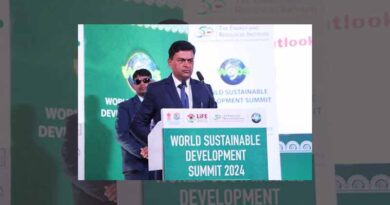India’s energy shift: Major growth in renewables sets stage for a green 2024
26 December 2023, New Delhi: As the curtains draw on 2023, India’s energy sector emerges as a vibrant tapestry, intricately woven with ambitious renewable initiatives, groundbreaking policy shifts, and strategic global partnerships, all painting a promising picture for a sustainable 2024. This year was a watershed moment for India’s green energy ambitions, marked by significant strides towards reshaping its energy narrative and setting a global benchmark in the transition to renewable sources.
Marking a significant milestone in India’s green energy chronicle was the launch of the National Green Hydrogen Mission. Allocated with a budget of Rs 19,744 crore, the mission aims to spearhead India into becoming a global hub for green hydrogen production, targeting an annual output of 5 million metric tonne by 2030. Central to this endeavor is the Rs 17,490 crore earmarked under the Strategic Interventions for Green Hydrogen Transition (SIGHT) Programmes, promoting the production of green hydrogen and the development of electrolyzers.
The government’s resolve in augmenting renewable energy was further underscored by its plan to infuse 50 GW of renewable energy capacity annually until FY28. This ambitious strategy aligns with the national objective of amassing 500 GW of installed renewable energy capacity by 2030, which includes a robust thrust on wind power, aiming for a minimum of 10 GW capacity addition each year.
In a significant move to stabilize renewable power supply, the Union Cabinet sanctioned a Rs 3,670 crore viability gap funding scheme for the installation of 4,000 MWh of Battery Energy Storage Systems (BESS). This strategic decision is anticipated to revolutionize India’s approach to energy storage and round-the-clock renewable power availability.
On the domestic front, the government made a colossal push in solar energy, allocating a total capacity of 39.60 GW for domestic solar PV module manufacturing to 11 companies. This initiative, backed by Rs 14,007 crore under the Production Linked Incentive Scheme for High Efficiency Solar PV Modules (Tranche-II), is expected to draw an investment of Rs 93,041 crore, thereby significantly bolstering India’s prowess in solar module production.
Globally, India reinforced its commitment to sustainable energy solutions by initiating the Global Biofuels Alliance (GBA) at the G20 Summit, in collaboration with nations such as the US, Brazil, and the UAE. In the domestic arena, the country is progressing steadily towards implementing 20% ethanol-blended petrol by 2025, a move aligned with its overarching goal to curtail carbon emissions and reduce reliance on oil imports.
Despite these advances, the path ahead isn’t without challenges. The actual pace of renewable energy capacity addition has trailed behind expectations, with projections indicating an addition of merely 20 GW in the current fiscal year and about 25 GW in the next. To meet the ambitious 2030 target of 500 GW, India will need to significantly upscale its annual capacity addition. Moreover, the expansion of the transmission network has been progressing at a slower pace, achieving only 61.5% of its target in the first half of the fiscal year.
In nutshell, 2023 has laid a robust foundation for India’s renewable energy aspirations. Stepping into 2024, the energy sector is poised for further advancements, with a clear emphasis on sustainability, innovation, and addressing the impending challenges in its journey toward a greener future.
Also Read: Planting seeds for bringing youth into agriculture
(For Latest Agriculture News & Updates, follow Krishak Jagat on Google News)















